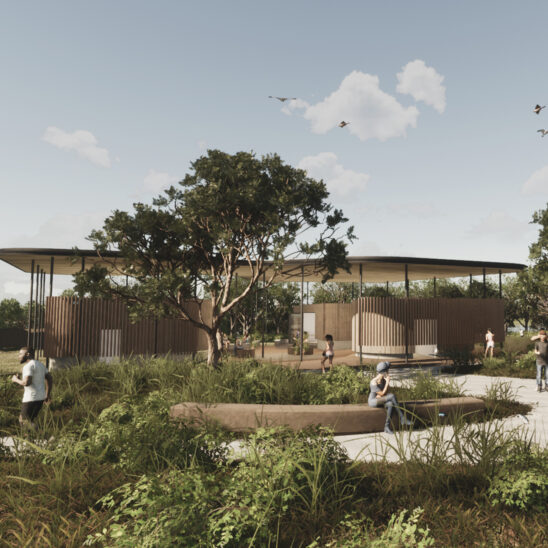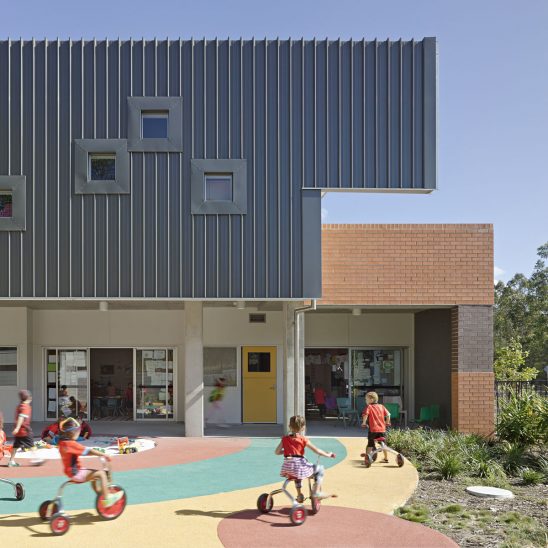Mari-Mari-Ba sits on a site with rich history as a community service provider and cultural landmark. It was a worthy Density and Diversity Done Well social housing demonstration project. Deicke Richards navigated several site and project constraints, from koalas and bushfire overlays to infrastructure easements, that could have proved insurmountable if not for the positive and thoughtful efforts of all those involved in the project. By far the greatest legacy will be felt by the First Nations Community Health and Housing provider and the many families who have and will call this place home.
– Office of the Queensland Government Architect
Mari-Mari-Ba is a regeneration of Joyce Wilding Hostel, which served as a refuge for vulnerable First Nations women and children since the 1970s. The new development provides 33 residential units within a series of two storey buildings wrapped around a central landscaped courtyard. A community hub building at the front of the site provides support services for the residents at ground level with units above. The residential buildings address the courtyard space to encourage casual surveillance of the communal central space and surrounding areas for operational and resident safety. The masterplan has been carefully developed with consideration of the existing natural assets and site constraints; much of the site is heavily vegetated bushland, including protected vegetation and bushfire hazards.
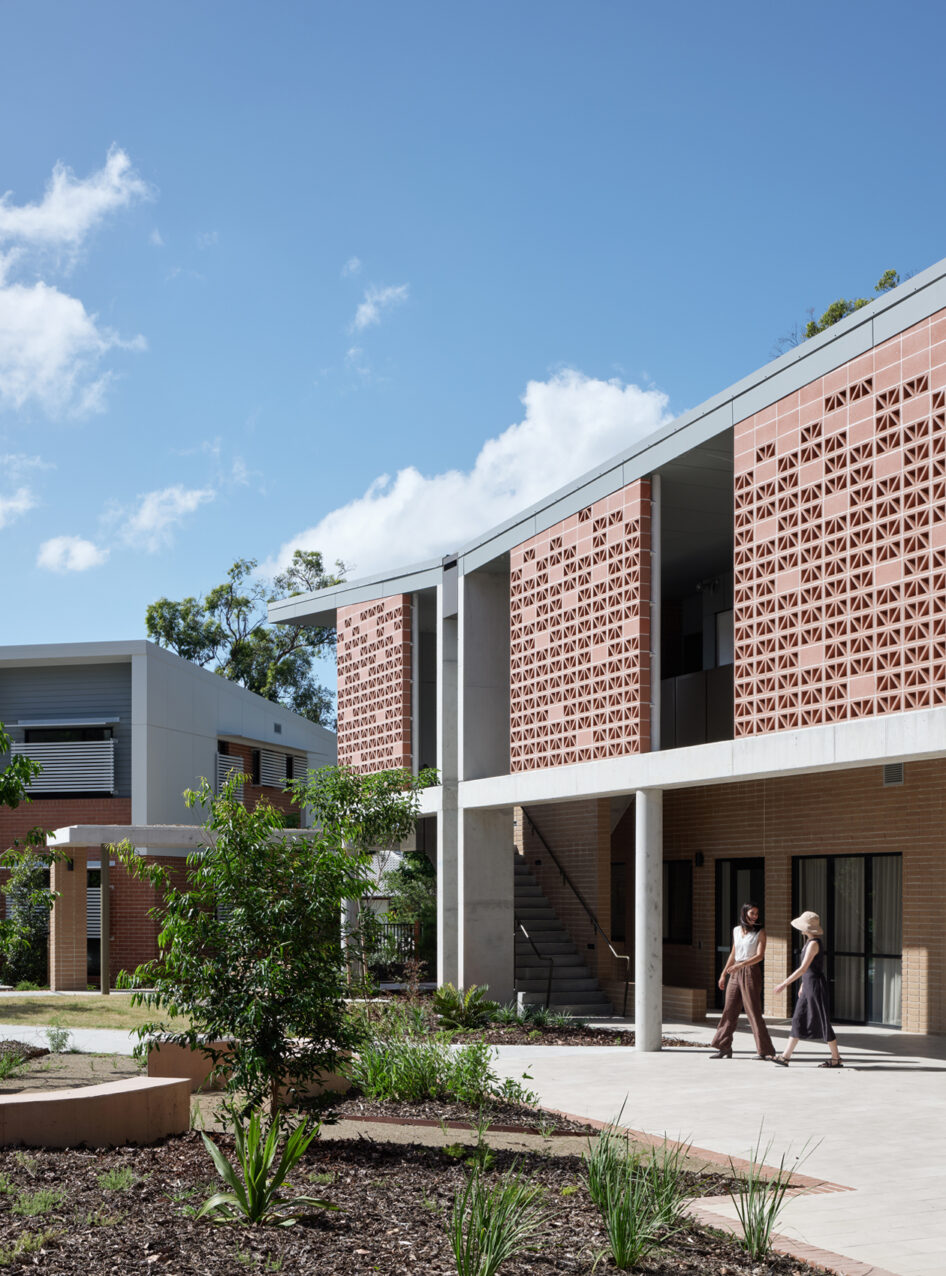
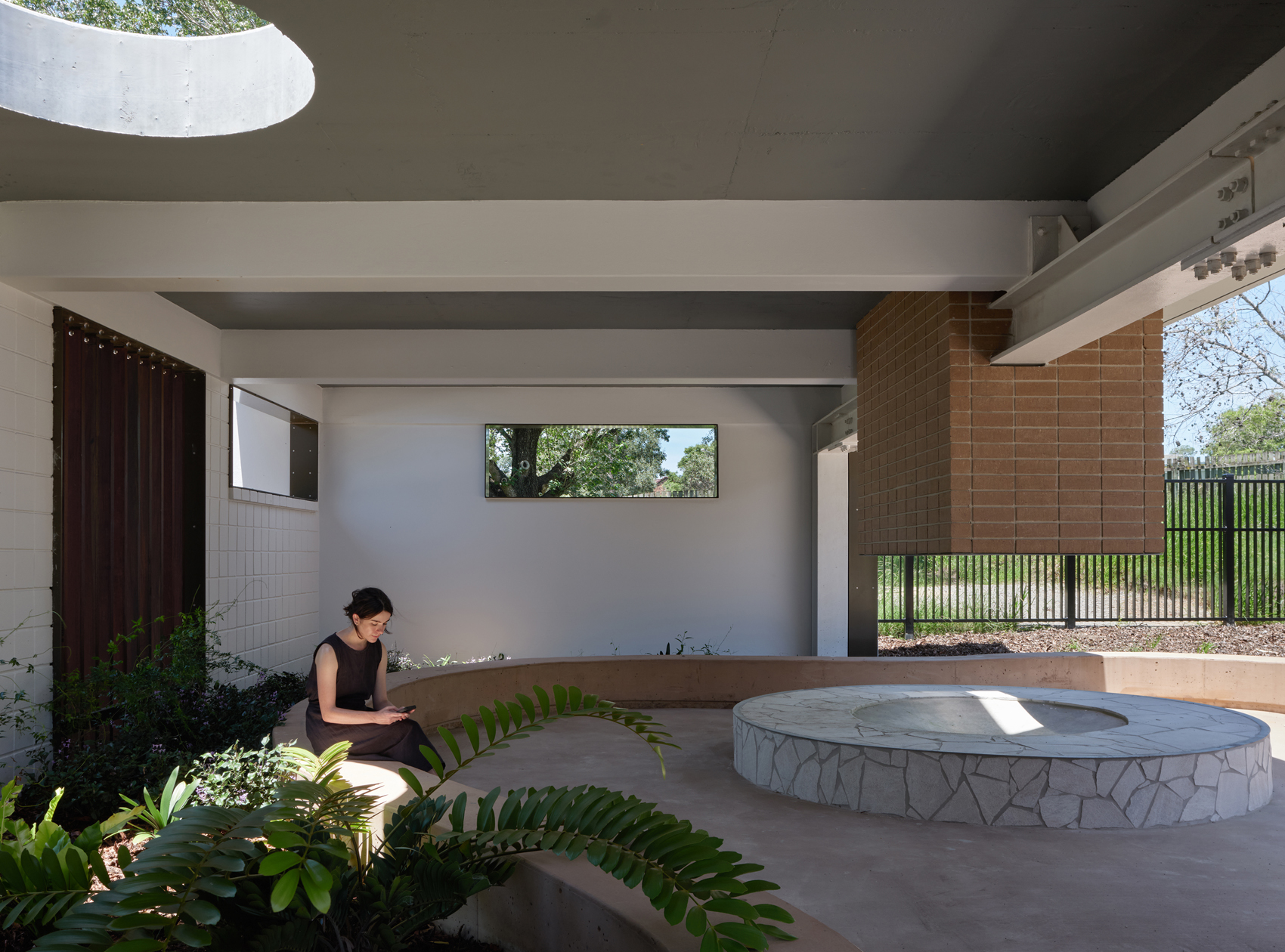
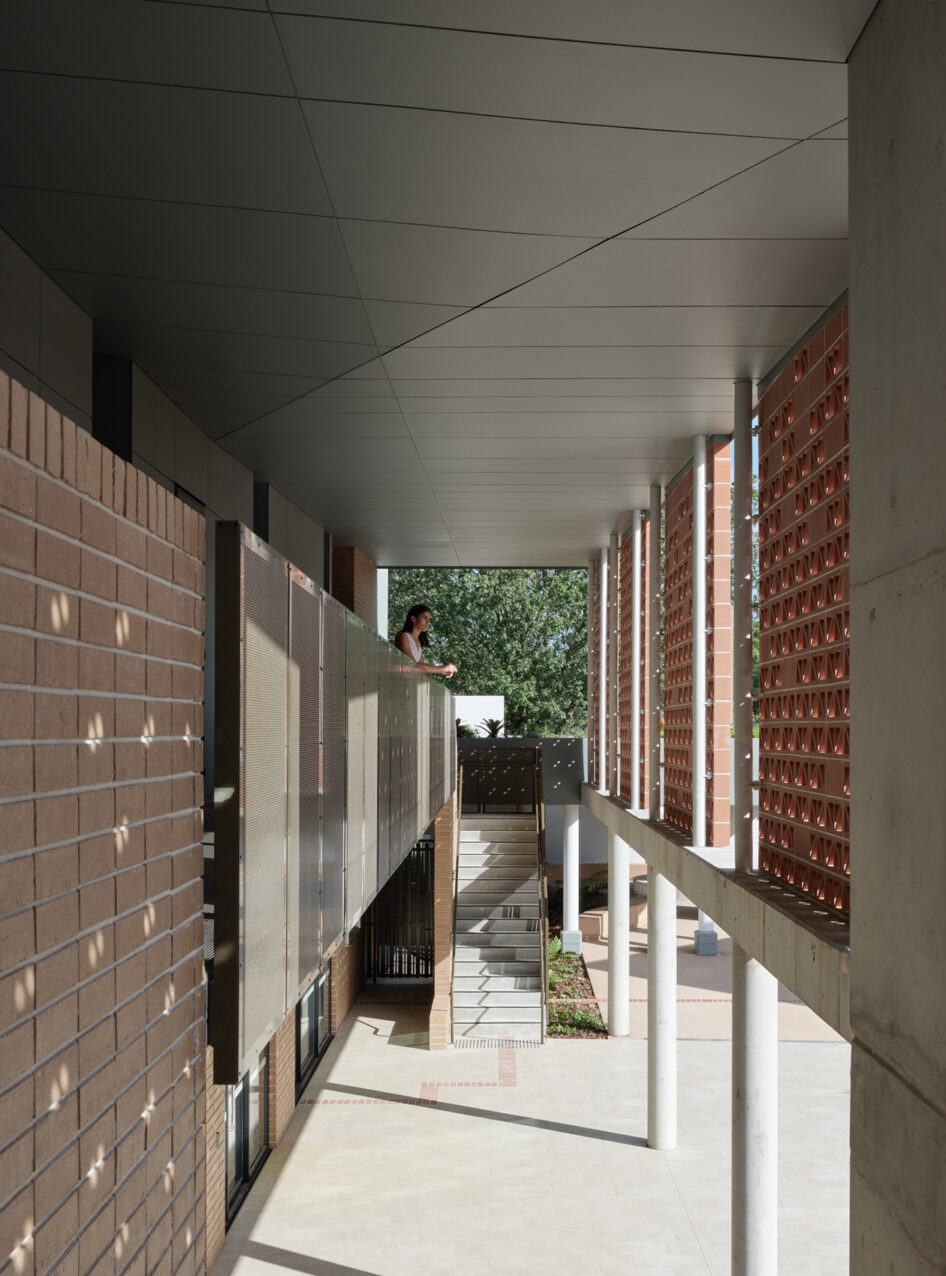
The Mari-Mari-Ba site has an extensive First Nations history, providing needed support services throughout its existence, both directly in terms of accommodation and support services, but also as a safe community space. The critical support to First Nations communities was identified by the Department of Housing as part of the project deliverables. Deicke Richards and the consultant team led several workshops involving owners, operators, previous tenants, and elders to ensure that First Nations voices were heard and integrated, and that culturally appropriate designs were achieved throughout the process. Consideration of the ongoing history and knowledge sharing of the site informed many of the design elements.
The community hub building at the front of the site acts as the public address and line of security for the project, incorporating support services, communal amenities and utility spaces with a greater level of public interaction, while the more private and culturally sensitive spaces are located deeper within the site. Within the community hub, a series of support service spaces flow into the central courtyard space, which also services as entrance to the site, facilitating social gatherings and casual interactions between residents and visitors. The dwellings integrate with the broader development while maintaining requisite privacy. To the rear of the site, the Western Communal Hub provides a setting for shared activities, meals, cultural ceremonies, or a space for reflection within the landscape. It was imperative that the design reflected First Nations cultural heritage. As part of the design process, ATSICHS commissioned Koa and Kuku Yalanji artist Elaine Chambers to create a design that was integrated within several elements of the building, including balustrades, screens, and ground surface treatment.
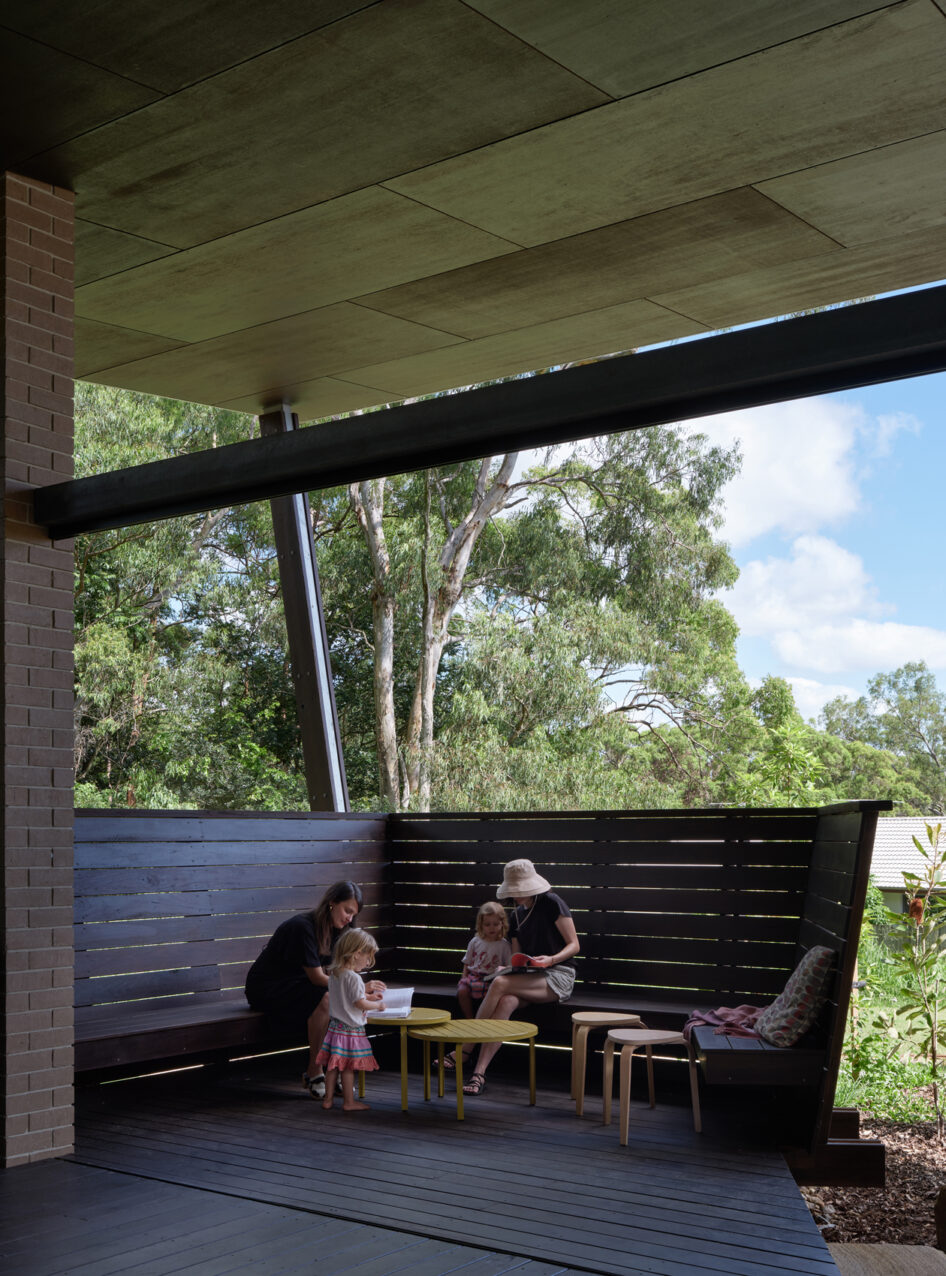
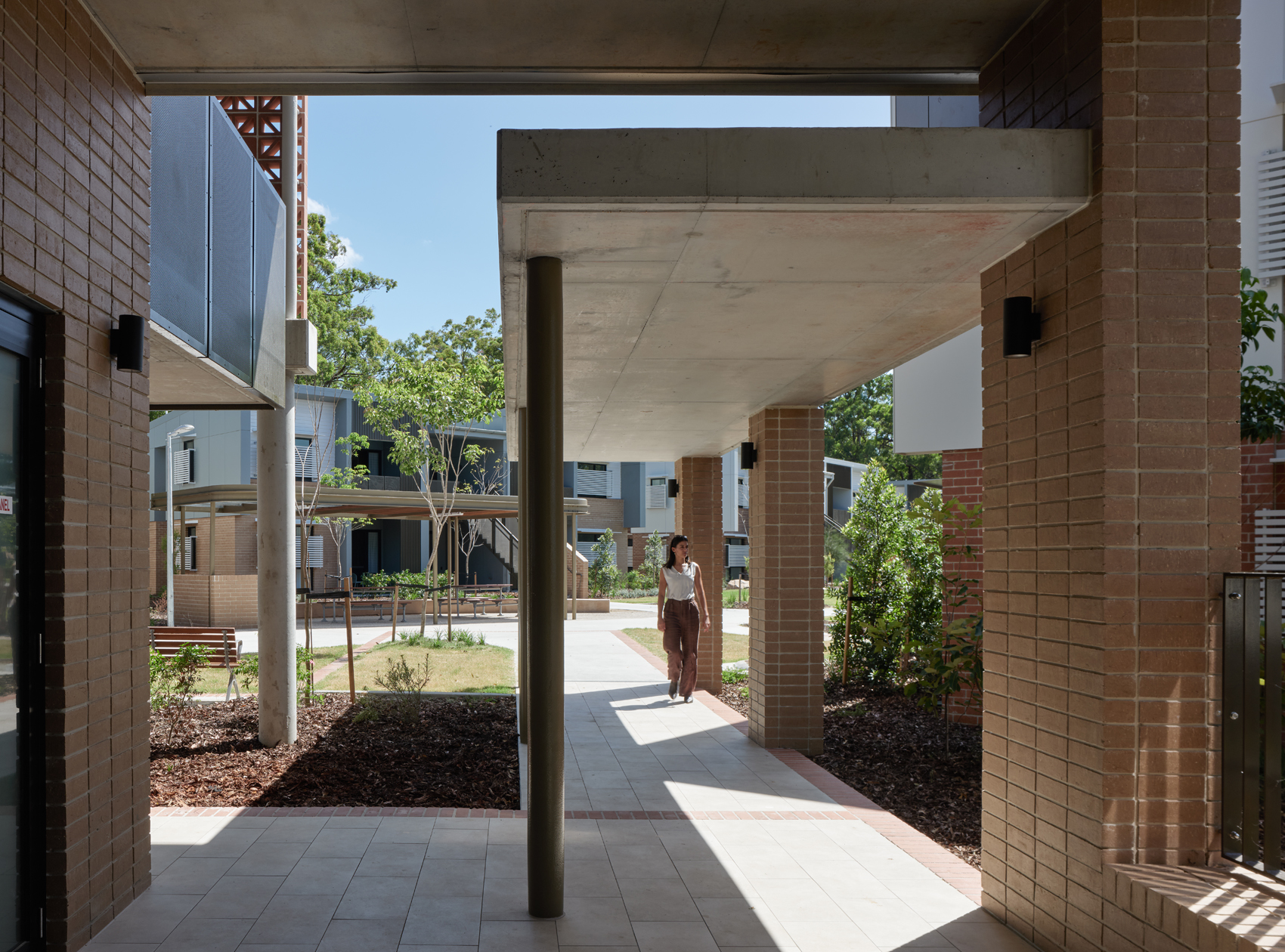
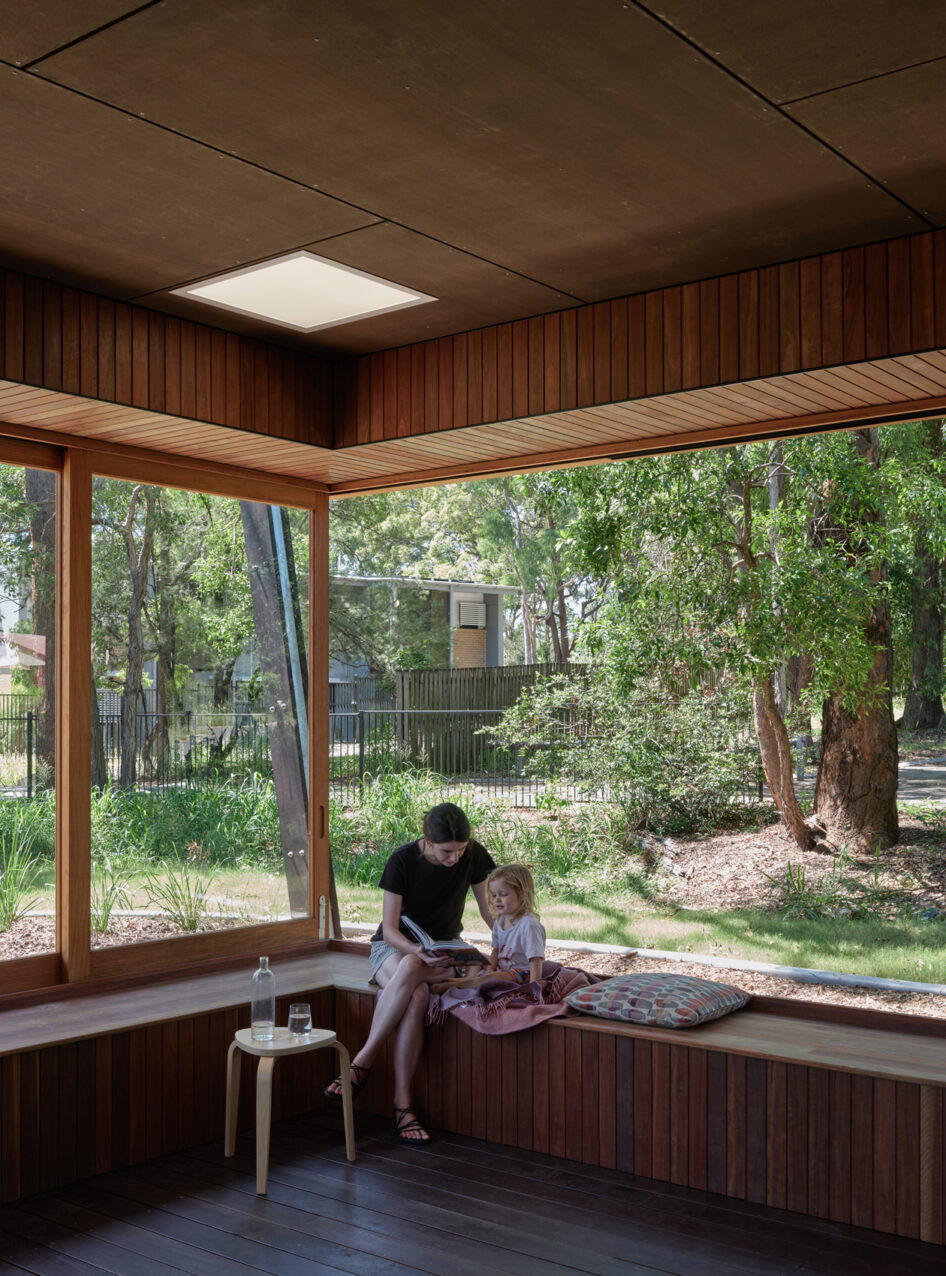
Affordable housing budgets are modest, with value for money a major driving consideration of any capital works program. Robust materials were prioritised throughout, with elevated finishes applied in selected areas where use of natural materials, project specific detailing and defined spatial relationships were deemed to be of benefit to the outcome. The project was intended from the outset to have as little impact on the existing natural environment as possible. This was a directive from both the Department of Housing and the operator given the vegetated location. The layout and design integrate passive design principles, with single loaded buildings with openings allowing for cross ventilation, eliminating the need for mechanical ventilation.
Collaborating with Deicke Richards on the redevelopment of Joyce Wilding Hostel into Mari-Mari-Ba has been an enriching journey. Through community consultation, engagement, and design, we’ve crafted outcomes that resonate with our values and the needs of those we serve. The structures offer not just safe and culturally significant housing, but also serve as vital communal spaces for our residents and visitors. We take immense pride in providing them with thoughtfully designed housing that honours First Nations cultural imperatives and fosters a connection to Country.
– Dylan Nelson, ATSICHS
- Client
Department of Housing and Public Works for QBuild in collaboration with Program and ATSICHS
- Year
2024
- Project Partners
Place Design Group (landscape)
- Awards
2024 AIA National Architecture Awards
Commendation, Residential Architecture / Multiple Housing,
Mari-Mari-Ba Affordable Housing.2024 AIA State Awards Queensland
Residential Architecture,
Multiple Housing Queensland,
Mari-Mari-Ba Affordable Housing.2024 AIA Social Impact Prize Queensland,
Mari-Mari-Ba Affordable Housing.2024 The Hayes & Scott Award
for Small Project Architecture,
Mari-Mari-Ba Bushland Communal Hub.2024 AIA Social Impact Prize Queensland,
Mari-Mari Ba Bushland Communal Hub.
